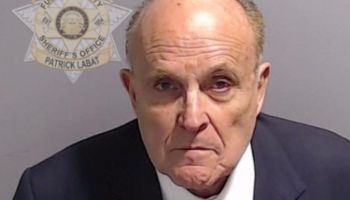What is “stop and frisk?” A stop-and-frisk policy allows police officers to detain and search an individual provided there’s “reasonable suspicion” he or she “committed, is committing, or is about to commit a felony or a Penal Law misdemeanor,” as the Washington Post reports.
That language comes from New York, where the NYPD has found itself at the center of a “stop and frisk” firestorm. The stop-and-frisk program has faced increased scrutiny in recent years, as opponents insist the NYPD unfairly targets minorities—blacks and Hispanics in particular—with their searches.
MUST SEE: Bloomberg Slams Federal Judge’s Ruling On NYPD’s Stop & Frisk Program
What is “stop and frisk?” In 2012, the NYPD used “stop and frisk” to stop 532,911 people, according to the Public Advocate’s office, and while that represented a significant drop since 2011, when police conducted 685,724 stops, the law remains controversial. Data suggests 53 percent of those subjected to “stop and frisk” searches are black, while 31 percent are Hispanic. Only 10 percent are white, even though Caucasians account for 31 percent of New York City’s overall population. In 2013, U.S. District Court judge Shira Scheindlin deemed the NYPD’s “stop and frisk” policy a violation of the Fourteenth Amendment of the constitution, which guarantees equal protection. Of course, “stop and frisk” is known as the “Terry stop,” a tag that derives from Terry v. Ohio, a 1968 case in which the U.S. Supreme Court ruled “stop and frisk” searches are not violations of the Fourteenth Amendment.
MUST SEE: The Hidden Side Of Stop And Frisk
Does “stop and frisk” work? That is, is “stop and frisk” effective at stopping crime? As with “stand your ground,” the controversial Florida measure that enables citizens to use deadly force to defend themselves in places other than the home, advocates on both sides of the debate use data to back their assertions. Outgoing New York City Mayor Michael Bloomberg, a “stop and frisk” supporter, says violent crime has gone down 30 percent since 2001, when he took office, Reuters reports.
Responding to Judge Scheindlin’s finding, the city claimed it made far fewer stops in 2013 than in 2012—57 percent fewer between April and June—and argued that reforming “stop and frisk” would lead to an increase in crime. What’s the future for “stop and frisk?” Judge Scheindlin has tasked former NYC lawyer Peter Zimorth to oversee the NYPD, and she’s called for a number of reforms, such as requiring some officers to wear cameras. The NYPD will likely appeal, arguing that “stop and frisk” cuts crime, even numbers suggest it unfairly targets blacks and Hispanics.















